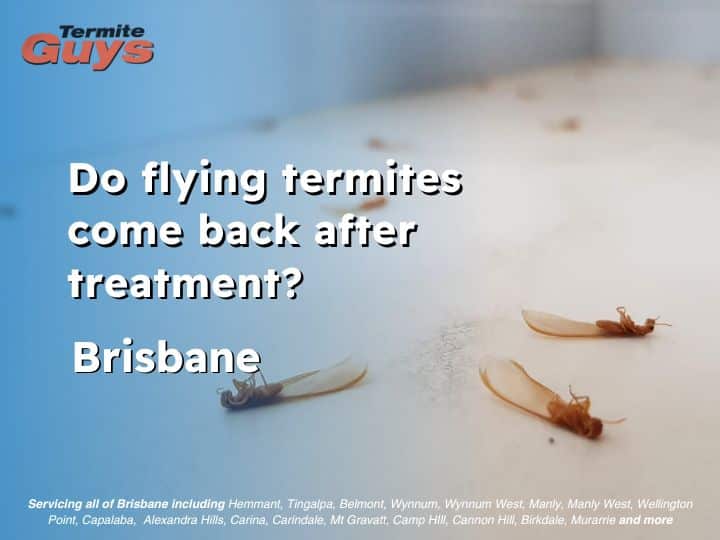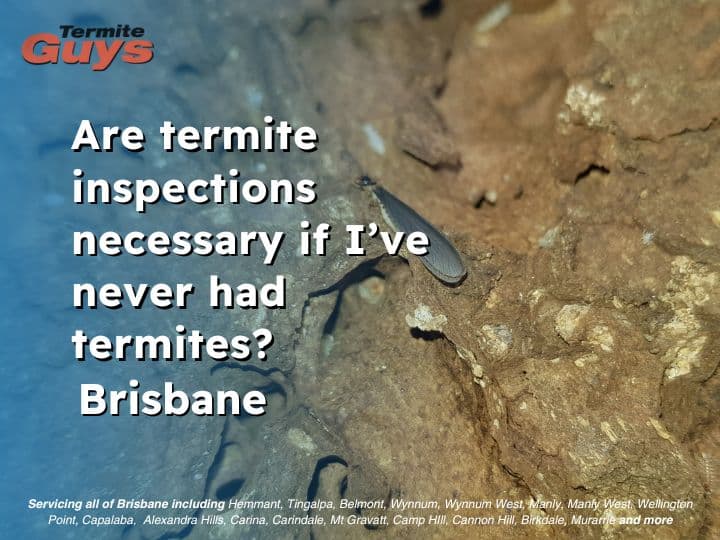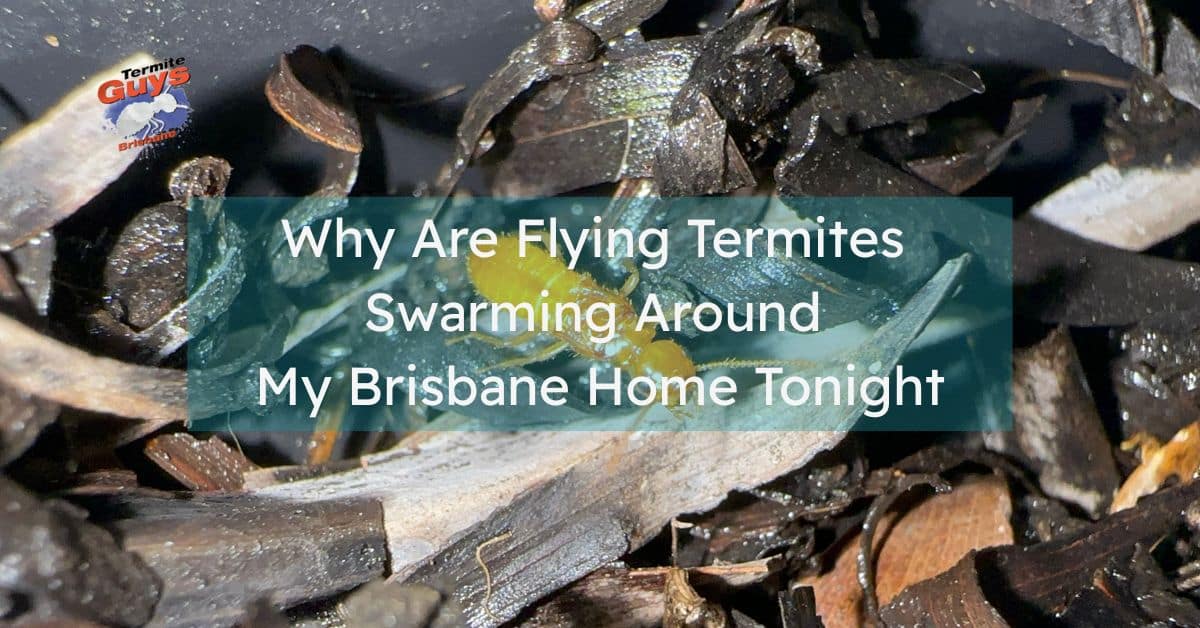Is That a Flying Termite?
Seeing winged insects fluttering inside your home can be alarming, and for good reason. Those flying termites, or alates, are not random visitors – they are the reproductive kings and queens of termite colonies, searching for a place to start new nests. Their presence around Brisbane homes signals that a mature termite colony is nearby and that your property may be at risk of infestation.
What Brisbane Homeowners Need to Know Before It’s Too Late
Brisbane’s warm, humid climate creates the perfect breeding ground for flying termites. Each year between November and March, thousands swarm after rainfall, often around lights at dusk. Understanding their behavior, recognising early warning signs, and knowing what actions to take can save homeowners from costly structural damage.
What Are Flying Termites and Why Do They Appear in Brisbane Homes?
Flying termites, also called alates, emerge once a colony matures. Their mission is to reproduce and establish new nests. While short-lived, their flight is a warning of nearby termite colonies threatening Brisbane homes.
During warm, humid evenings, particularly after rainfall, flying termites swarm in large groups. They shed their wings upon landing, seeking moist wood or soil — ideal spots to start a new colony.
Flying termites are reproductive members of established colonies
They swarm to establish new termite nests
Brisbane’s humid summer accelerates swarming
Discarded wings near windows signal termites have landed
Flying termites have straight antennae and equal-sized wings
Their activity often intensifies after storms
What causes flying termites to swarm around lights?
Flying termites are naturally attracted to light sources at dusk, which is why they cluster near windows and lamps after rain. It’s part of their mating flight during swarming season.
Do flying termites die after swarming?
Most flying termites die within a few hours if they fail to find mates or shelter, but successful pairs shed their wings and start new colonies.
Are Flying Termites Dangerous to My Home?
While flying termites don’t bite, they pose serious structural threats. Their presence means mature colonies are active nearby. Over time, worker termites consume timber frames, flooring, and roof supports, silently eroding your home’s structure from within.
Even if you see only a few, it’s critical to act fast. A single colony can contain hundreds of thousands of termites capable of hollowing timber beams in months. Termite damage in Brisbane costs homeowners millions each year due to the city’s ideal termite conditions.
Flying termites indicate mature colonies nearby
Their offspring infest wooden structures
Infestations reduce property value significantly
Moisture and leaks attract termite colonies
Droppings and discarded wings are common signs
Inspection is essential when flying termites appear
Can flying termites cause health problems?
Flying termites themselves don’t harm people, but infestations can cause mold growth and dust irritation, triggering allergies or asthma in sensitive individuals.
How long before flying termites damage your home?
Once they establish a colony, damage begins within months and can remain hidden until timber sounds hollow or shows cracks.
How Do You Kill Flying Termites Effectively?
Once spotted, eliminate flying termites quickly while preventing long-term infestations. Light sprays, traps, and natural deterrents can help control small numbers, but professional termite barriers provide lasting protection for Brisbane homes.
DIY methods like soap-water sprays or boric acid kill flying termites temporarily, but colonies must be destroyed underground. Professional pest control applies liquid termiticides or bait stations that target termites at their source.
Use boric acid or soapy water for small infestations
Turn off outdoor lights to reduce attraction

Install termite bait stations near walls or soil
Seal windows and door gaps after rain
Schedule professional barrier treatments by experts
Remove rotting timber or debris near foundations
Do flying termites come back after treatment?
Yes, without professional prevention barriers, new swarms from nearby colonies can return each season – typical in Brisbane’s humid conditions.
Can vinegar or essential oils kill flying termites?
Natural deterrents like vinegar, orange oil, and tea tree oil can repel flying termites short term but won’t eliminate colonies.
When Is Swarming Season Normal in Brisbane?
Flying termites in Brisbane usually appear between November and March, coinciding with warm temperatures and post-rain humidity. This annual event is part of their reproductive cycle, but spotting swarms indoors signals possible infestations nearby.
After rain showers, moisture and soft soil create perfect swarming conditions. While seeing them outdoors near streetlights is normal, finding them indoors means entry points exist in your home structure.
Brisbane’s swarming season peaks after storms
Late spring and summer are high-risk periods
Most active between sunset and early evening
Outdoor sightings are normal, but indoor ones warn of issues
Check window seals after rain events
Persistent sightings require inspection
How long does termite swarming last?
Termite swarming usually lasts 30-40 minutes, though multiple colonies can cause repeated evening activity over several days.
Should I panic during swarming season?
No need to panic – but arrange a termite inspection immediately to prevent colonies settling near your property.
What Myths About Flying Termites Should Brisbane Residents Stop Believing?
Many Brisbane homeowners mistake flying termites for harmless ants or assume they die off without causing real damage. Unfortunately, these myths often delay action, allowing silent infestations to spread.
Believing that “flying termites only appear outside” or that “brick homes are safe” are common misconceptions. Termites only need minimal access through gaps or moisture to invade.
Myth 1: Flying termites are just ants – false
Myth 2: Brick homes can’t get termites – false
Myth 3: Swarming termites die without risk – partly false
Myth 4: DIY traps fully solve infestations – false
Myth 5: Termite activity only happens in summer – false
Myth 6: Inspections every few years are enough — false
Why are flying termites often mistaken for flying ants?
Their similar appearance misleads homeowners, but termite wings are equal-sized and antennae are straight, unlike ants’ bent antennae and narrow waists.
Can I ignore one or two flying termites indoors?
Even a single sighting indoors could mean an active colony nearby; professional inspection is always recommended.
How Can Brisbane Homeowners Prevent Future Flying Termite Infestations?
Prevention is key for Brisbane’s termite-prone environment. Moisture control, annual inspections, and installing professional termite barriers like those offered by expert pest controllers can stop infestations before they start.
Removing timber debris and sealing cracks reduces nesting options, while barrier treatments create chemical zones that termites can’t detect or cross. Regular inspections ensure early colony detection and treatment.
Keep gutters clean and repair roof leaks
Store firewood away from your house

Ensure gardens don’t touch timber walls
Use chemical barriers around your property
Install physical termite shields when building
Schedule inspections every 12 months
Are termite inspections necessary if I’ve never had termites?
Yes, Brisbane’s climate makes all homes vulnerable — regular checks catch early signs and save repair costs.
How long do termite barriers last?
Quality chemical barriers, when professionally applied, protect a home for up to eight years.
Frequently Asked Questions About Flying Termites in Brisbane
1. Are flying termites more common in some Brisbane suburbs?
Yes. Suburbs with older homes, vegetation, and damp conditions – such as The Gap, Indooroopilly, and Carindale – report more flying termite activity each year.
2. Can Brisbane weather affect termite swarms?
Absolutely. High humidity, warm nights, and post-rain moisture boost flight activity across South East Queensland’s homes.
3. Should I vacuum flying termites indoors?
Vacuuming helps remove them quickly, but sealed disposal is essential. Follow with an inspection to rule out a colony.
4. How do I know if discarded wings mean infestation?
Piles of uniform, translucent wings near windows or skirting boards indicate swarmers have landed and may be nesting inside.
5. What professional termite treatment is best for Brisbane homes?
Non-repellent liquids like Termidor create invisible chemical barriers, effectively eliminating colonies by spreading treatment through termite contact.
Summary
This guide covered commonly asked questions that people ask about flying termites, revealing how Brisbane’s climate fuels termite swarms from November to March and how residents can protect their homes through prevention and inspection. For expert inspections, prevention, and termite barrier installation, Termite Guys Brisbane remains the trusted name homeowners turn to for protection and peace of mind.


